Features of the Thylacine
Created: Saturday, 13 April 2013 07:56
The thylacine was a large wolf-like marsupial. Other common names for the Tasmanian Tiger were:- The Marsupial Wolf, The Hyena, The Zebra Opossum, Native Wolf.
| Stripes: (16 – 19 in total) along the back gave the thylacine its common name of Tasmanian Tiger. | ||
| The jaws of the thylacine could open very wide – up to 120o they are believed to open wider than the jaws of any other animal except for some snakes. | 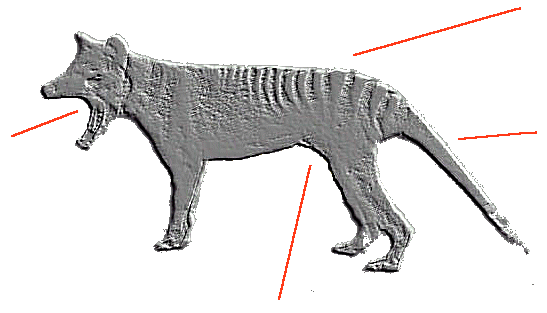 | The tail was long and thin and stood out straight from the thylacine’s body and can appear almost the same length of the body and shaped like a kangaroos tail. |
| The abdominal region of the thylacine was narrow similar to a greyhound dog or whippet dog, giving the animal a gaunt look. The thylacine was a marsupial and carried its young in a backward facing pouch, as many as three or four at a time. |
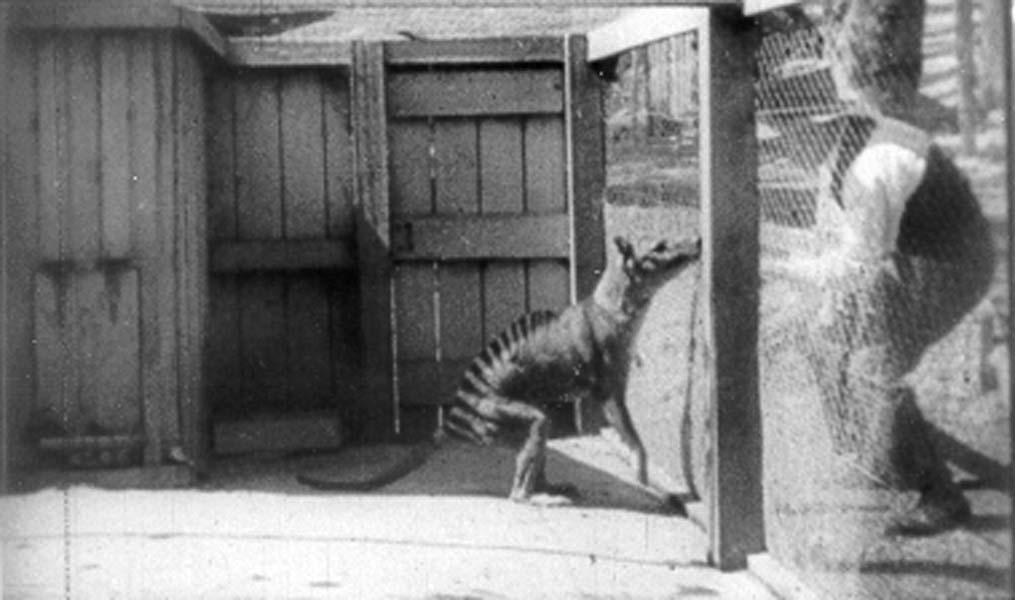
In much of the documentation relating to historical behaviours of the thylacine, there has been little mention of the extended rear heel on the thylacine and the importance of this for mobility.
Some historical accounts mention the extended rear heel being planted firmly on the ground to support the thylacine when it may reach up for an item over head height. This manoeuvre in particular may cause the animal to have the appearance of a kangaroo, with the added support of the rear tail.
 Other reports have mentioned the thylacine “Galloping along or bounding like a lion”.
Other reports have mentioned the thylacine “Galloping along or bounding like a lion”.
It is this second trait that I would like to focus upon. It has been significant evidence that we have been able to obtain in our search for the thylacine. During January 1999, when on an early daylight chase I ran to a spot where I had seen the animal only to find it 20 meters ahead of me leaping along a damp mud track and over groups of large tussock grass. After we had realised that the animal had eluded us we inspected the trail for the footprints and evidence. We were surprised to find that the animal had only made rear heal strikes throughout the entire chase!
What I mean by rear heel strikes is that we could see no evidence of the front paw pads hitting the ground at any stage throughout the chase area. All that we could find of the evidence were 2 parallel lines where the rear feet had come together (as a rabbit might or on a far smaller scale to that of a kangaroo) and approximately 30mms back from these two parallel lines were 2 indentations like spur marks. These indentations and spur like marks continued for the entire length of the trail that we chased the animal on. (See photo below)
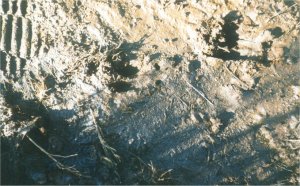
The animal during the chase appeared to be very upright and the tail tended to rotate or move up and down in a whip like motion to counter-balance the thylacine as it moved forward. This technique appeared to be not too dissimilar to the hoping formation of a normal kangaroo but made a little more awkward due to the fact that the animal may not use this technique very often. One could understand that this form of movement might be the best technique for the animal to use when a burst of speed is required compared to trotting with its unusual gait on all fours.
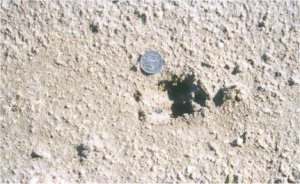
The imprint of these tracks are clearly due to the ability of the thylacine to raise itself up like a kangaroo and to use its hind legs for propulsion and quick movement. See the image above.

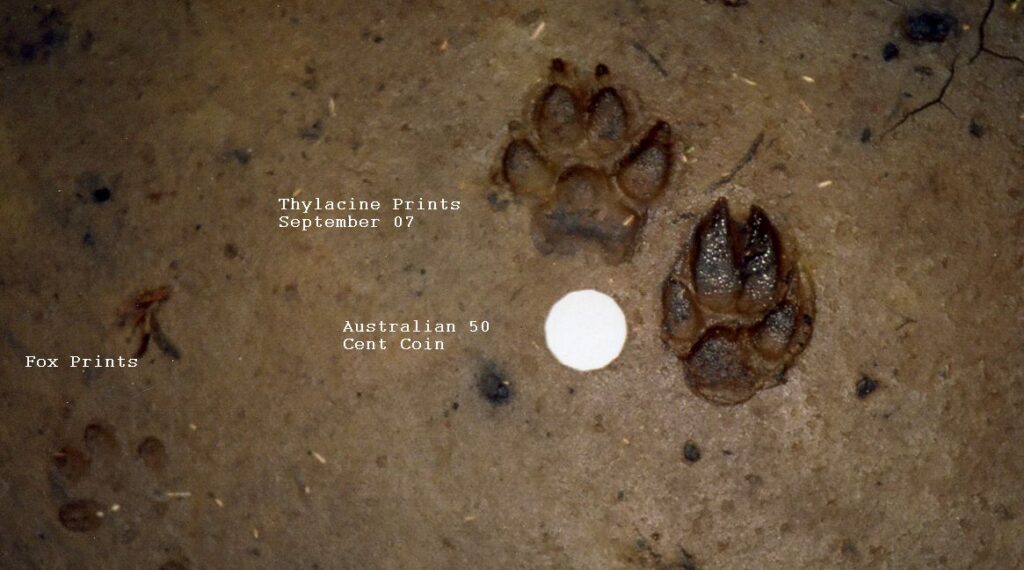
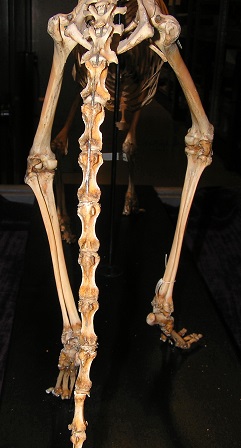
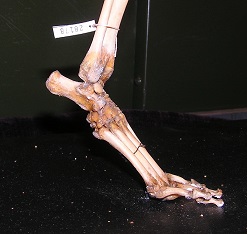
Thylacine Skeleton
Rear Heal image from a thylacine skeleton. Does it match the image of the animal on the right?
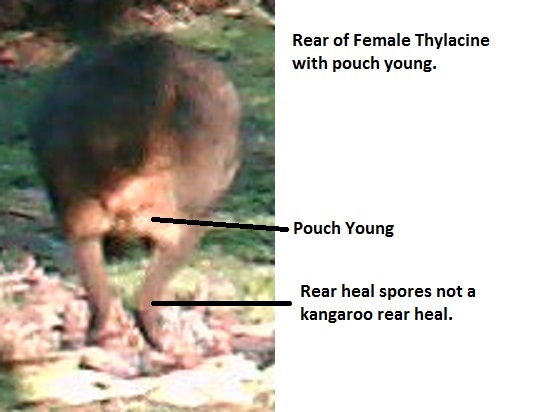
Unusual Animal
Does the animal above match any of the thylacine skeleton features to the left?